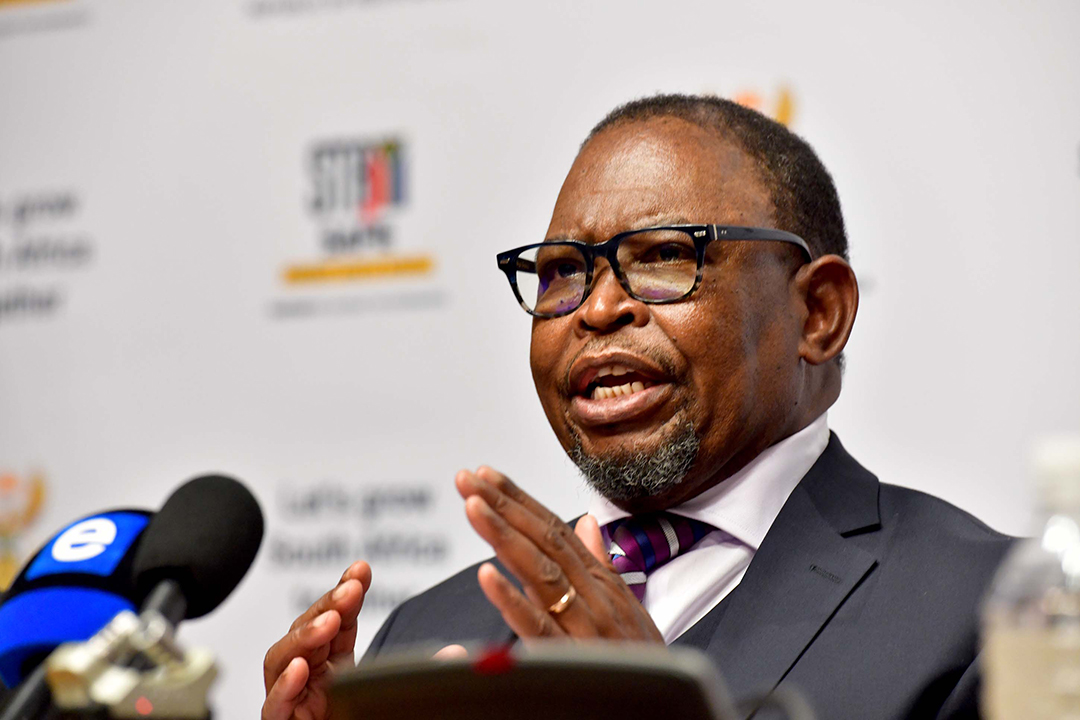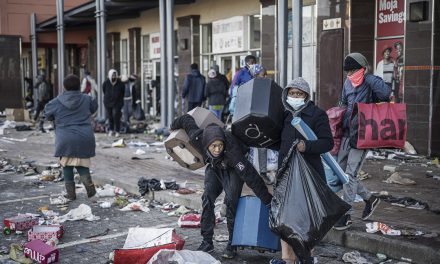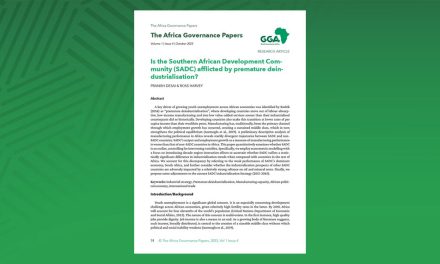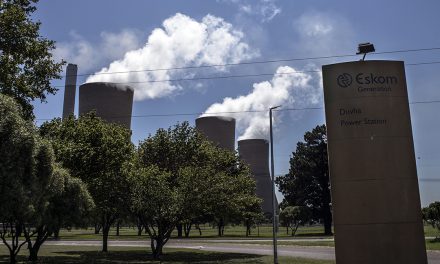Budgets are the single most important signal that a government can send to the market. The prevailing wisdom in international finance is that the optimal signal for governments to send is one of fiscal prudence. In other words, demonstrating discipline with respect to government expenditure is one important sign of a commitment to macroeconomic stability. This stability is a key drawcard for attracting investment into the country, along with security of tenure, protection of property rights, and respect for the rule of law. Without investment, broad-based development remains a pipe dream. In South Africa, this is more important than ever for a few key reasons.

Minister Enoch Godongwana. Photo: GCIS
First, net inflows of foreign direct investment (FDI) into South Africa as a percentage of GDP have been exceptionally low since 1998. They have only moved above the 2% mark five times since then, with an anomalous peak of 9.68% in 2021, despite sound fiscal management of the economy between 1996 and the global financial crisis of 2008. The deterioration since then has obviously weighed on investor sentiment, perhaps most vividly displayed in the lack of any growth in the critical mining sector. From 2015 (the time of the “weekend finance minister”) to 2017, FDI flows ranged between 0.44% and 0.68% of GDP. Attracting FDI is about sending the right signals and ensuring that those signals are substantiated with a credible commitment to honouring investment contracts, providing genuinely secure property rights, and investing appropriately into growth-enhancing infrastructure (human and physical capital).
Second, South Africa’s GDP per capita growth peaked at 4.59% per year in 2006 (from a base of -0.74 in 1998). It plummeted to an all-time low in 2020 of -7.11%, which of course can squarely be attributed to extensive economic lockdown measures during COVID-19. Growth recovered somewhat to 3.66% in 2021 before falling again to 1.06% in 2022. GDP per capita growth is an important, if imperfect, metric to measure a country’s progress. GDP growth is relatively meaningless; if population growth outpaces it, the net effect is negative.
Projected growth by the Treasury for 2024 is only 1.3%, moving up to 1.8% by 2026, which Investec views as overly optimistic. South Africa has essentially suffered a pandemic of sclerotic (and jobless) growth as mechanisation increasingly substitutes for labour, and growth is seen in either non-productive (government) sectors or capital-intensive (non-labour-absorptive) sectors. Without investment in labour-absorbing sectors, the economy will continue to stagnate, which has demonstrable negative socio-political impacts such as voting for populist leaders.
Third, South Africa’s debt-to-GDP ratio is worryingly high. It climbed from 52.65% in 2015 to 77.38% in 2020. This raises debt servicing costs, which is especially challenging if that debt is denominated in hard currency. Since 2015, the Rand has depreciated significantly, thanks to Transnet and Eskom failures and rampant increases in organised crime (and a lack of ability to prevent terrorism financing, hence our greylisting by the Financial Action Task Force in 2022). The result has been successive rating agency downgrades, which further erode the value of the currency.
For the 2024–25 financial year, the debt servicing allocation is R382.2 billion (16.1% of the total). This is still higher than any other line item in the entire budget (but lower than it would have been if access to the GFECRA had not been granted). Either way, when debt servicing costs escalate as a proportion of the budget, it leaves relatively little for welfare (R387 billion if you combine “social security” and “social protection”), basic education (R324.5 billion), health (R271.9 billion), investment into critical infrastructure (R22.2 billion) that would attract investment, and other key expenditure areas.
Gross fixed capital formation (GFCF), which “includes land improvements, plant, machinery, and equipment purchases; and the construction of roads, railways, and the like, including schools, offices, hospitals, private residential dwellings, and commercial and industrial buildings,” peaked at 21.8% of GDP in 2008 from a base of 16.51% in 1998. It declined to 14.21% by 2022. For every single year since 1998, South Africa’s gross fixed capital formation has been lower than the average for the whole of sub-Saharan Africa and southern and eastern Africa, respectively. The Treasury predicts that GFCF will grow by a mere 3.7% in 2024.
This context, combined with a narrowing tax base and a likely shortfall against targeted revenue collection, makes the 2024 budget speech (delivered last week) all the more important. By all accounts, Finance Minister Enoch Godongwana’s pronouncements were met with the sense that “amidst significant economic challenges,” the budget was “better than expected”. Treasury got lucky in its one-off ability to tap into a R150 billion Gold and Foreign Exchange Contingency Reserve Account (GFECRA) to compensate for some of the shortfall and, cleverly, “reduce borrowings and borrowing costs”. As Ryk van Niekerk of Moneyweb put it: “It is unfortunate that the National Treasury had to dip into the fund, as the fiscal hole the government finds itself in is mainly its own doing.
Poorly run state-owned enterprises, corruption, and an increasing unemployment rate due to poor policies and inefficient government departments have cost South Africa dearly.” Nonetheless, there is some sense of optimism if reforms at Eskom and Transnet bear fruit. However, these will be undermined if the government is not able to stick to the proposed budget—civil service wage increases and SOE bailouts have a nasty habit of scuppering budget forecasts, for instance.
Overall, Treasury and SARS have clearly done an admirable job in a difficult context. Their fellow government departments now need to come to the party. The bottom line is that we need our debt-to-GDP ratio to move below 60% again; our economy is nowhere near large or dynamic enough to sustain anything beyond that, and we won’t have access to the GFECRA again. To run down the ratio, GDP has to grow, driven by export revenue and underpinned by growing FDI.
For this to materialise, some conditions have to be met: The Treasury can signal fiscal discipline all it likes, but constant bailouts of failing SOEs undermine the power of the signal. Investors will be keeping a close eye, for instance, on the R47bn guarantee granted to Transnet. It must produce the necessary turnaround in performance, or it will simply be seen by investors as money down a black hole. As witnessed over the last three years, the importance of efficient port and rail logistics (especially for the mining sector) cannot be overstated. If the government can seriously sort this out in partnership with the private sector and bring load-shedding to a credible end by 2025, net fixed capital formation growth should start to bite. This will take the fiscal ship out of its current icy waters.
Dr Ross Harvey is a natural resource economist and policy analyst, and he has been dealing with governance issues in various forms across this sector since 2007. He has a PhD in economics from the University of Cape Town, and his thesis research focused on the political economy of oil and institutional development in Angola and Nigeria. While completing his PhD, Ross worked as a senior researcher on extractive industries and wildlife governance at the South African Institute of International Affairs (SAIIA), and in May 2019 became an independent conservation consultant. Ross’s task at GGA is to establish a non-renewable natural resources project (extractive industries) to ensure that the industry becomes genuinely sustainable and contributes to Africa achieving the Sustainable Development Goals (SDGs). Ross was appointed Director of Research and Programmes at GGA in May 2020.












